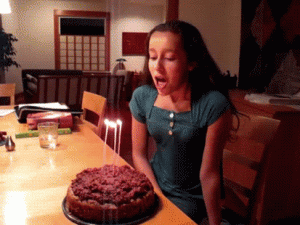What Are Cliplets?


Microsoft Research Cliplets is an interactive app that uses semi-automated methods to give users the power to create «Cliplets» – a type of imagery that sits between stills and video from handheld videos. The app provides a creative lens one can use to focus on important aspects of a moment by mixing static and dynamic elements from a video clip.
Please see the BLINK and BLINK Cliplets (opens in new tab) page for more information about the latest version of the Cliplets app.
-
Cliplets is a research project from Microsoft Research. This project explores a form of visual media that juxtaposes still image and video segments, both spatially and temporally, to expressively abstract a moment. The tension between static and dynamic elements in a cliplet reinforces both aspects, strongly focusing the viewer’s attention or conveying a narrative. We develop a set of idioms, essentially spatiotemporal mappings, that characterize these cliplet elements, and use these idioms in an interactive system to quickly compose a cliplet from ordinary handheld video. A key challenge is to avoid seam artifacts by maintaining spatiotemporal continuity in the cliplet composition. We address this using several algorithms from computer graphics and vision.
The publically available app is a result of this research project. Here is a Techinical Report describing the underlying research:
Neel Joshi, Sisil Mehta, Steven Drucker, Eric Stollnitz, Hugues Hoppe, Matt Uyttendaele, and Michael Cohen. Cliplets: Juxtaposing Still and Dynamic Imagery (opens in new tab). No. MSR-TR-2012-52. 15 May 2012.
-
Cliplets works with 32-bit and 64-bit versions of Windows 7 and later.
-
- Tutorial One (opens in new tab) shows how to make a simple Cliplet with a still background and one repeating «loop» layer.
- Tutorial Two (opens in new tab) continues Tutorial One by adding one repeating «mirror» layer.
- Tutorial Three (opens in new tab) shows how to make a Cliplet with a still background, one repeating «loop,» and a «play» layer that begins in the middle of the Cliplet.
- Tutorial Four (opens in new tab) shows how to make a Cliplet with temporally juxstaposed layers.
- Tutorial Five (opens in new tab) shows a bit more complex Cliplet with a «play» layer that holds, then plays, then holds. This is overlaid with a «loop» layer during the first hold, and a «mirror» layer during the final hold. The result depicts a classic blowing-out-candles moment.
-
Microsoft Research Cliplets is provided free of charge and without official support. However, if you have questions or issues, you may find help at the Cliplets Forum (opens in new tab), which is monitored by the developers and provides community-based support. You may also want to view our Tutorials.
Personne
Neel Joshi
Senior Principal Research Manager
Ricardo Gutierrez
Senior Software Engineer
Steven Drucker
Partner Research Manager
